IDSA Board Dives Deep Into Workforce Challenges
By Carlos del Rio, MD, FIDSA
IDSA President
One of the strategic priorities of IDSA is having a robust infectious diseases workforce. The recruitment of trainees into the field of infectious diseases is a critical component of that strategy. To better understand the challenges around recruitment, the Board of Directors dedicated its entire March meeting to a deep dive into the dynamics of the ID/HIV workforce. Over the course of two days, the Board heard presentations from Wendy Armstrong, MD, FIDSA, FACP, Erin Bonura, MD, and Michael Melia, MD, FIDSA, all fellowship program directors at their respective institutions, as well as three panels of trainees, and discussed past and current ID workforce challenges and potential future approaches to address them.
With the theme “Looking Back, Looking at Now and Looking Forward,” the meeting was designed to serve as an educational and brainstorming session and a springboard for our upcoming June meeting, where the Board will put our knowledge gained into practice and assess existing strategies and develop new strategies to strengthen the ID/HIV workforce.
Looking Back
On the heels of the 2023 ID Fellowship Match that saw a decrease in the number of programs and positions filled, the presenters cautioned the Board to put the results into the proper context. While this year’s numbers — 74% of offered positions in adult ID and 56% of total programs filled — were a slight downturn over the last two years, in reality, we are offering more positions and opening more programs than ever before. Our trajectory is good, and the ID field remains a vibrant and exciting specialty. The situation for pediatric ID is definitely more challenging and requires even further exploration. However, the situation overall is not dire, and we need to change the narrative that the ID field is falling off a cliff or failing in some way.
The Board reviewed data and efforts over the past decade to address workforce challenges, including the work of IDSA’s Task Force for Recruitment Into ID that convened from April 2015 to June 2016 and made recommendations ranging from moving to the all-in match and conducting a workforce study to addressing ID compensation reform and increasing trainee interest in and exposure to ID. While these efforts resulted in some improvements, we also missed the mark in some areas, and it is time to reassess and develop a better understanding of the issues facing today’s ID workforce.
We also discussed the many factors that influence resident choice of ID or other specialties. A 2016 survey published in CID, for instance, found that two-thirds of graduating internal medicine residents developed an interest in their ultimate career before residency, indicating the importance of engaging with these learners early and plugging leaks in the ID pipeline.
The Board and IDSA leadership staff then broke into groups and discussed “What is the ideal ID/HIV workforce model of the future?”
Looking at Now
After parsing through the data, we were delighted to hear directly from current trainees — including some who had expressed an interest in ID but ultimately did not choose ID — regarding how ID is viewed from the residency lens, the barriers to pursuing a career in ID and new pathways of interest to residents in 2023.
While ID specialists are highly regarded and deeply respected for their expertise and dedication, trainees who ultimately decided not to pursue a career in ID cited issues such as low compensation, long hours, more years in training, COVID burnout and the lack of a procedure that only ID physicians can perform. Those who did choose ID recounted their love of medical detective work, their commitment to social justice and the influence of esteemed mentors and educators.
We also heard from international medical graduates about their unique challenges, including visa and immigration policies and cultural biases. And we shared with them an interesting — and hopefully inspiring — fact: six members of the current IDSA Board of Directors, including the current president of IDSA, are international medical graduates.
In addition, we heard from ID/critical care attending physicians, fellows-in-training and residents who have matched into this pathway about their journeys and what drew them into the field.
Looking Forward
The final portion of our deep dive into workforce issues focused on meeting emerging learners where they are. We discussed how learners learn and how we can use this knowledge to reach and teach medical students and residents now and into the future. The quality of medical school curriculum and teaching is extremely important and significantly influences career choice, so we need to find ways to support our medical education community through coaching, skills building and other resources.
Sara Dong, MD, a combined adult and pediatric infectious diseases fellow at Beth Israel Deaconess Medical Center and Boston Children’s Hospital, provided us with a glimpse into engaging learners and groups around the world through digital opportunities. Dr. Dong is well-known within the field for her work at the Febrile platform, a free open-access educational resource for trainees that uses case-based learning and podcast interviews with expert consultants to discuss high-yield ID topics and model clinical reasoning.
We also discussed pathways to practice and the mismatch that often occurs between the expectations current trainees have for their career and work-life balance and what they see as the reality of the life of practicing ID physicians. While there are many potential career pathways, and few are highlighted to trainees, the truth is that trainees’ first exposure is to faculty in teaching institutions, most of whom follow one of two career paths — either the clinician-educator or the physician-scientist pathway. We need to meet them where they are and think about ways to support them.
Putting It All Together and Moving Forward
When the Board meets again in June to reassess existing strategies and develop new strategies to address workforce challenges, we will need to approach our discussions by not making assumptions. The priorities and realities of learners today are different than they were 10 years ago. The landscape has changed dramatically.
And we have many questions that remain unanswered. How do we ensure our workforce is diverse and represents the populations it serves? How do we effectively communicate our roles and our identity to attract professionals into the field? How do we more effectively incorporate digital learning opportunities into our educational offerings? And perhaps most important: How do we take care of our people — the full-time clinicians, international medical graduates, the physician-scientists, the clinician-educators and the underrepresented groups who feel marginalized in the system?
If we can take care of our current workforce and ensure they are supported and happy, it will make our job of recruiting new professionals into that workforce that much easier.
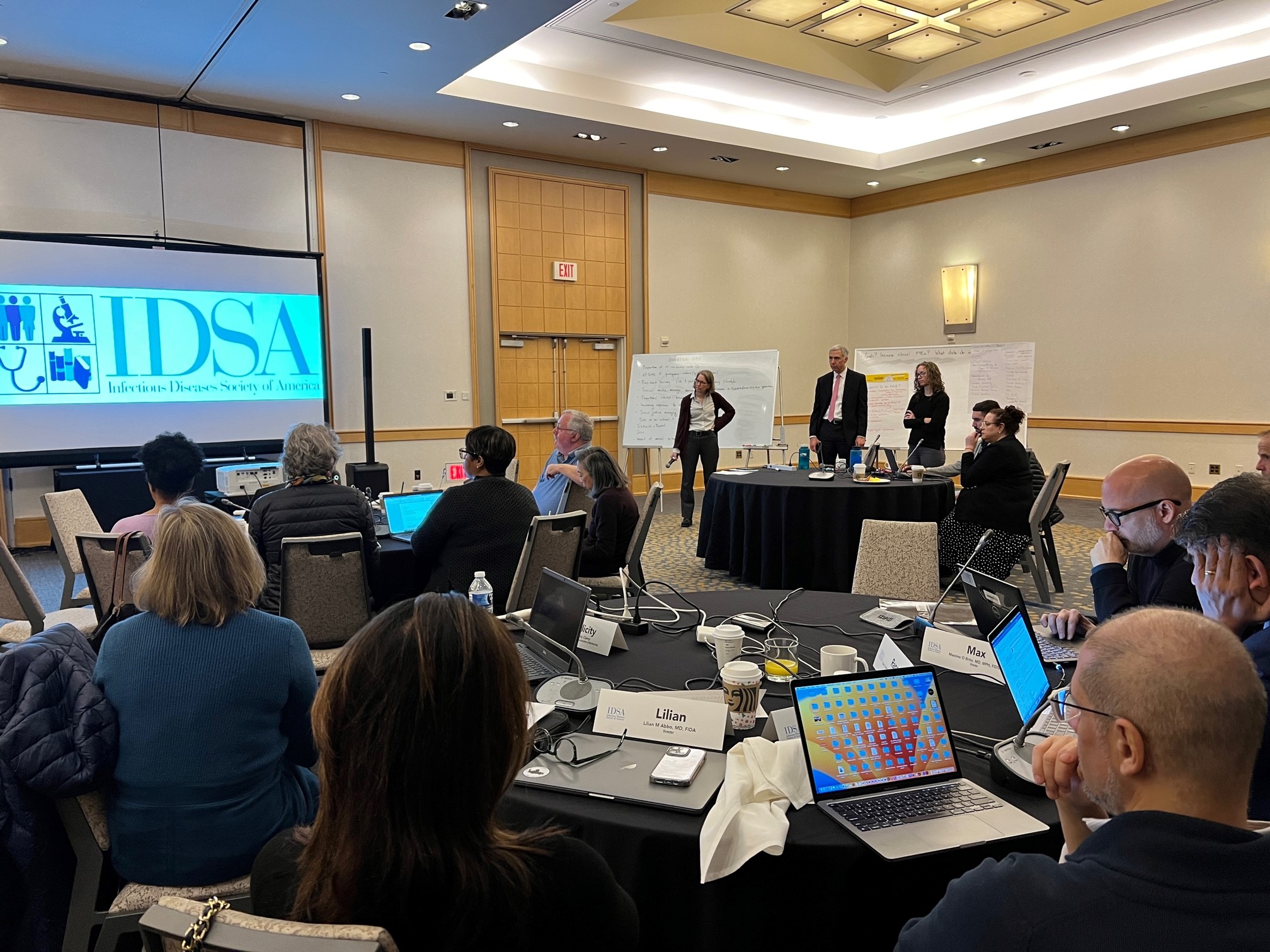 |
|
Drs. Wendy Armstrong, Fellowship Program Director Emory University, Michael Melia, Fellowship Program Director at Johns Hopkins University, and Erin Bonura, Fellowship Program Director at Oregon Health & Science University, lead an IDSA Board discussion on workforce challenges. |
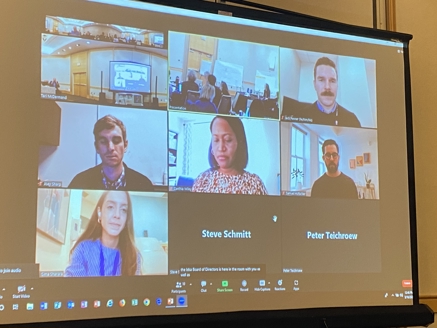 |
| Drs. Robbie Flick, Chief Resident, Johns Hopkins (not pictured); John Penner, PGY3, University of California, San Francisco; Sima Sharara, PGY3, Johns Hopkins; Joey Sharp, Chief Resident, Emory University; and Zanthia Wiley, Associate Professor, Infectious Diseases, Emory University, participate in a panel discussion about factors influencing their choice of specialty. |
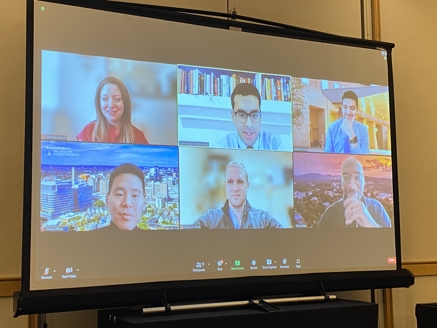 |
| Drs. Sahil Angelo, PGY-3, Georgetown; Taison Bell, Assistant Professor, University of Virginia; Lindsay Busch, Assistant Professor, Emory University; Gavin Harris, Assistant Professor, Emory University; Sameer Kadri-Rodriguez, Head, Clinical Epidemiology and Associate Research Physician, NIH; and Chanu Rhee, Associate Professor of Medicine, Harvard Medical School participate in a panel discussion regarding the ID/critical care professional pathway. |
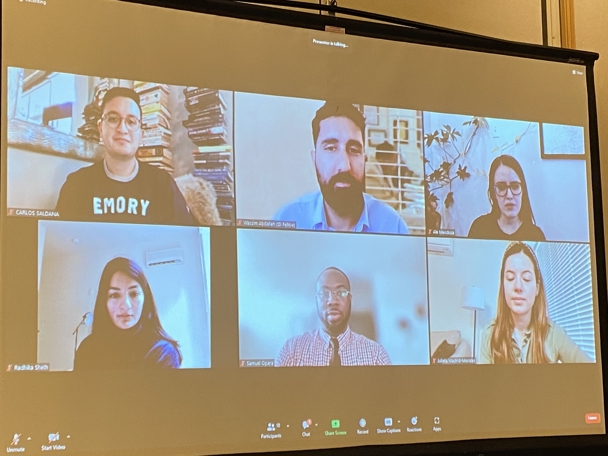 Drs. Carlos Saldana, Fellow, Emory University; Wassim Abdallah, Fellow Emory University; Ale Mendoza, Resident, Mayo Clinic; Radhika Sheth, Fellow, Oregon Health & Science University; Samuel Opara, Fellow, Emory University; and Julieta Madrid Morales, Fellow, Oregon Health & Science University discuss the challenges faced by international medical graduates.
Drs. Carlos Saldana, Fellow, Emory University; Wassim Abdallah, Fellow Emory University; Ale Mendoza, Resident, Mayo Clinic; Radhika Sheth, Fellow, Oregon Health & Science University; Samuel Opara, Fellow, Emory University; and Julieta Madrid Morales, Fellow, Oregon Health & Science University discuss the challenges faced by international medical graduates.
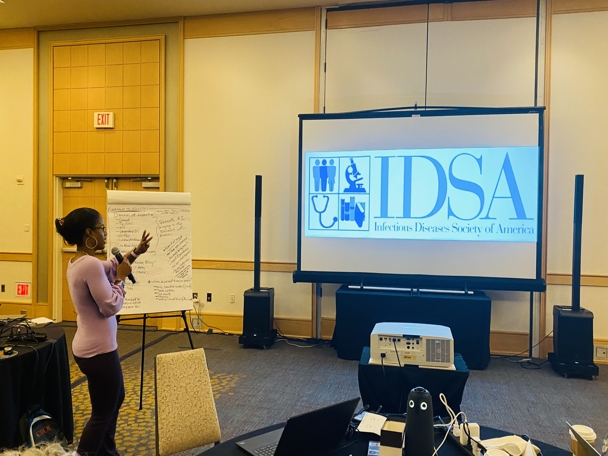 |
| IDSA Board Member Jasmine Marcelin, MD, FIDSA, reports outs from a breakout discussion on “What is the ideal ID/HIV workforce model of the future? |
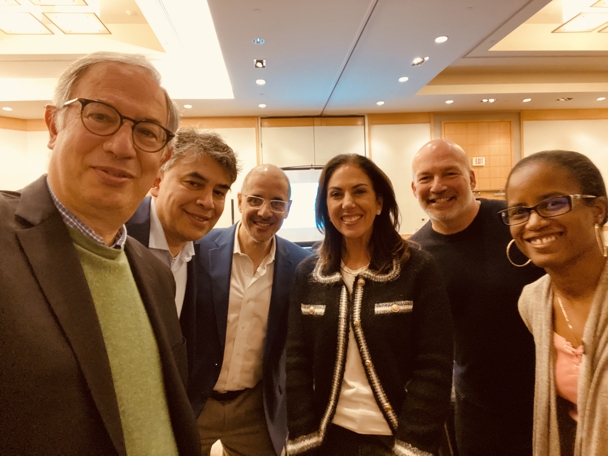 |
| Six members of the IDSA Board of Directors are international medical graduates. Left to right: Drs. Carlos del Rio, Rana Chakraborty, Cesar Arias, Lillian Abbo, Max Brito and Jasmine Marcelin. |

